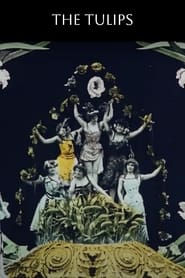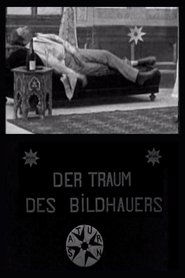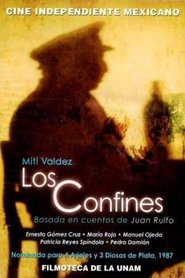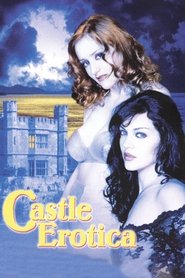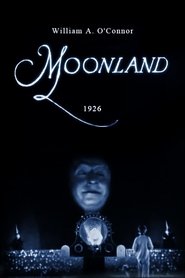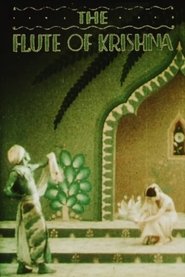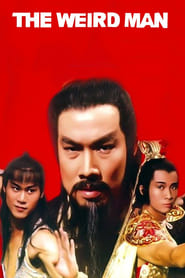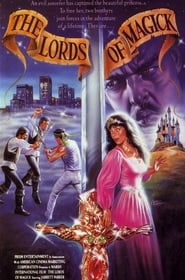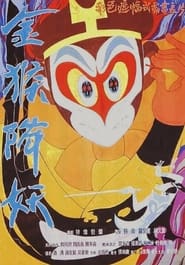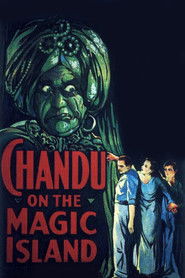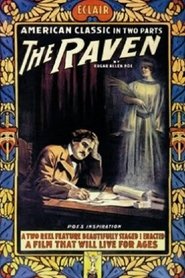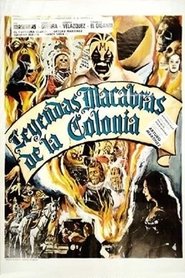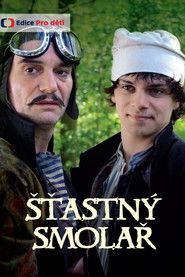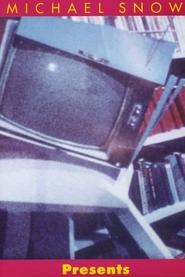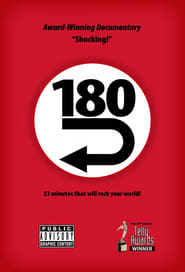Top Rated Fantasy Movies on Tub Tv - Page 346
-
The Tulips
1907
The Tulips
1907
star 5In a bower of giant tulips a boy and girl practice flower magic. They cause flowers and birds to open and human forms to issue therefrom, and on the black background of the wonderful garden there appear myriad flowers, in the center of each of which is a smiling feminine head. Tableaux showing pretty girl and flower effects are plentiful and the film winds up with a burst of multi-colored flame, which shoots in fiery splendor from leaves and petals. -
The Sculptor's Dream
1907
The Sculptor's Dream
1907
star 5.8The artist studio is decorated with a rug, a chaise lounge, a small table, a plinth, a couple of copies of classic sculptures, a vase with flowers, a few prints on the walls, and on the wood paneled lower half of the wall, an 8-pointed star [Saturn-Film's logo]. The artist is wearing a white shirt over his grey trousers, shirt and necktie, and he is wearing black shoes. With hammer and chisel, he applies the last touches on his last piece of sculpture - The Three Graces, standing nude on a rectangular podium covered with a white bed-shirt. He steps back, contemplates his work, and rejoices on the beauty he has achieved. He goes out momentarily, and brings a bottle of champagne and a glass; before drinking, he makes a toast to his finished statue. He drinks, smokes a cigarette, and contemplates his work - until he falls asleep on the chaise lounge. Only then do The Three Graces stir, and tip-toe around their creator. One even dares to approach her lips to the artist's. -
Los confines
1987
Los confines
1987
star 4.8Mix magical universe of Juan Rulfo, in which Juan Preciado, "Pedro Paramo", located incestuous siblings "Talpa" while Juvencio Nava, of "Diles que no me maten", flee several men who pursue for killing Colonel Terrones. -
Slippery Jim
1910
Slippery Jim
1910
star 6.8Apparently inspired by the antics of Harry Houdini, Slippery Jim opens in the office of a police commissioner to whom a rather cocky villain is presented. The commissioner orders the prisoner to be clapped in irons, but this proves to be easier said than done because our anti-hero - presumably the Slippery Jim of the title - proves to be an expert escapologist. -
Castle Erotica
2002
Castle Erotica
2002
star 4When two sexy American tourists run out of money while traveling in Italy, they find themselves working at an enchanted castle where guests come to unleash their secret passions. Gabriela and Julia sense something strange going on and once the secret is revealed, they find they have the power to play cupid with the lives of their guests. This is one European getaway that will change their lives forever… -
Moonland
1926
Moonland
1926
star 6The Man in the Moon invites little Mickey and his dog over for a visit. They go on a magical trip and meet strange characters along the way. -
The Flute of Krishna
1926
The Flute of Krishna
1926
star 5.2Produced by the Eastman Kodak Company and shot in a then-experimental process, two-color Kodachrome, Martha Graham's dance "The Flute of Krishna" is performed by students from the Eastman School of Music. It's likely (but unconfirmed) that the film was directed by an uncredited Rouben Mamoulian. -
Rainbow Fireflies
2012
Rainbow Fireflies
2012
star 7.1One year ago, Yūta lost his father in a car crash. Now in the 6th grade, Yūta goes to catch beetles in a dam near a mountain, a place he often went with his father. There, Yūta meets a strange old man, and while walking in heavy rainfall, slips and blacks out. When Yūta awakes, he sees a child, Saeko, who shows him a village from the past. A precious summer vacation for Yūta begins. -
The Weird Man
1983
The Weird Man
1983
star 4.5Chang is known for his lone swordsman and hero movies and strangely The Weird Man still reflects this. Cheng plays a righteous, beheaded priest with supernatural powers that returns from the dead to wreak havoc against one of the corrupt kingdoms, making Cheng a heroic swords-ghost. -
The Lords of Magick
1989
The Lords of Magick
1989
star 2.7A pair of sorcerer brothers from 10th-century England are sent to modern-day California on a quest to rescue a princess. -
The Monkey King Conquers the Demon
1985
star 8In the heart of wild mountains, a dreadful devil, disguised as a pretty young woman, tries to seize Xuan Zang to devour him. The holy monk is an easy prey because, naive and good, he is easily misled by appearances. But fortunately he is accompanied by the Monkey King, who is clairvoyant. -
Chandu on the Magic Island
1935
star 4.8On the mystic island of Lemuria, the cult of Ubasti seek the Egyptian Princess Nadji to sacrifice so that their goddess Ossana, whose soul resides in Nadji's body, may be resurrected by Black Magic. Nadji is located in the Far East port of Suva, but shielded by the White Magical powers of Frank Chandler, an American raised by Eastern mystics who is also known as Chandu. When Chandu takes a voyage alone, however, the evil Voice of Ubasti is able to magically spirit her to Lemuria, where Black Magic reigns supreme. Chandu sets out in pursuit with his sister Dorothy, niece Betty and nephew Bob; but, shipwrecked on the magic island, Chandu finds his family also held prisoner for sacrifice while he is plunged into an endless maze of caverns beneath the evil temple, where both his mortal and magical strength seem rendered useless. -
The Raven
1915
The Raven
1915
star 6.5After a brief view of Edgar Allan Poe's family background, his grandfather, David Poe, Sr., an Irish immigrant to America, and his father, David Poe, Jr., the poet's life is depicted from the death of his mother and his subsequent adoption by John Allan, to his own tortured death in 1849. Expelled from the University of Virginia for incurring too many debts, Poe nonetheless courts and marries Virginia Clemm but is disowned by his foster father. While residing in Fordham, New York, Poe tries to earn a living as a writer but meets with little financial success. Overwhelmed by their impoverished state, Virginia dies and Poe sinks into a profound depression. Always a victim of alcohol and subject to hallucinations, Poe first imagines that his neighbor, Helen Whitman, is Virginia, then plunges himself into an elaborate delusion in which his wife's spirit, various other spectres and a raven finally drive him to his own death. -
Macabre Legends of the Colony
1974
star 4.8The Mexican luchador Tinieblas buys an ancient painting of a dead woman ignoring the warning that it is haunted. Later, after a fight his partners El Fantasma Blanco and Mil Máscaras joins him in a party at his apartment with two beautiful ladies, but when the clock reaches midnight the painting transports them all to colonial times. In order to return home they must face Spanish Conquistadores, Aztec Warriors and an evil witch whose mother, an unstoppable living dead hungry for human sacrifices, is the woman in the painting. -
Mary and Gretel
1916
Mary and Gretel
1916
star 5.8Alice in Wonderland meets the Garden of Eden in this surreal fable of a drunk rabbit, bowling dwarfs, and the two bewildered girls of the title. -
Dream Lovers
1986
Dream Lovers
1986
star 6.3Musician Song Yu and jewellery designer Yuet-heung, who barely know each other, meet in their dreams before finally uniting in person. -
The Battle of Brazil: A Video History
1996
star 6.1The struggle of releasing "Brazil" in the United States of America is examined in this Criterion documentary. -
Lucky Loser
2012
-
Presents
1981
Presents
1981
star 6.3The apparent vertical scratch in celluloid that opens Presents literally opens into a film within the film. When its figure awakens into a woman in a 'real' unreal set, the slapstick satire of structural film begins. It is not the camera that moves, but the whole set, in this first of three material 'investigations' of camera movement. In the second, the camera literally invades the set; a plexiglass sheet in front of the dolly crushes everything in its sight as it zooms through space. Finally, this monster of formalism pushes through the wall of the set and the film cuts to a series of rapidly edited shots as the camera zigzags over lines of force and moving fields of vision in an approximation of the eye in nature. Snow pushes us into acceptance of present moments of vision, but the single drum beat that coincides with each edit in this elegaic section announces each moment of life's irreversible disappearance. -
180
2011
180
2011
star 3.9The film begins by showing images of the Holocaust, and stating that Hitler sanctioned the killing of 11 million people. This is followed by Comfort interviewing people about Adolf Hitler; their responses indicate a lack of historical knowledge, although he also finds a neo-Nazi who claims to love Hitler. Comfort proposes a hypothetical situation to his interviewees, asking if they would kill Hitler if they had the opportunity at that time in history. He asks more hypotheticals dealing with what his interviewees might do in other circumstances related to the Holocaust. He then switches his topic to make similar comparisons to abortion within the United States and the right to life, personalizing his arguments to make comparisons between the Holocaust and abortion in order to place the interviewees on the spot. The documentary concludes with Comfort stating that over 50 million abortions have occurred to date; he calls this the "American Holocaust".
 Netflix
Netflix
 Amazon Prime Video
Amazon Prime Video
 Apple iTunes
Apple iTunes
 Apple TV Plus
Apple TV Plus
 Disney Plus
Disney Plus
 Google Play Movies
Google Play Movies
 Paramount Plus
Paramount Plus
 Hulu
Hulu
 HBO Max
HBO Max
 YouTube
YouTube
 fuboTV
fuboTV
 Peacock
Peacock
 Peacock Premium
Peacock Premium
 Amazon Video
Amazon Video
 The Roku Channel
The Roku Channel
 AMC+
AMC+
 Kocowa
Kocowa
 Hoopla
Hoopla
 The CW
The CW
 Vudu
Vudu
 Starz
Starz
 Showtime
Showtime
 PBS
PBS
 Pantaflix
Pantaflix
 FXNow
FXNow
 Tubi TV
Tubi TV
 Kanopy
Kanopy
 Comedy Central
Comedy Central
 Crunchyroll
Crunchyroll
 Microsoft Store
Microsoft Store
 Redbox
Redbox
 Sun Nxt
Sun Nxt
 ABC
ABC
 DIRECTV
DIRECTV
 Crackle
Crackle
 Fandor
Fandor
 Plex
Plex
